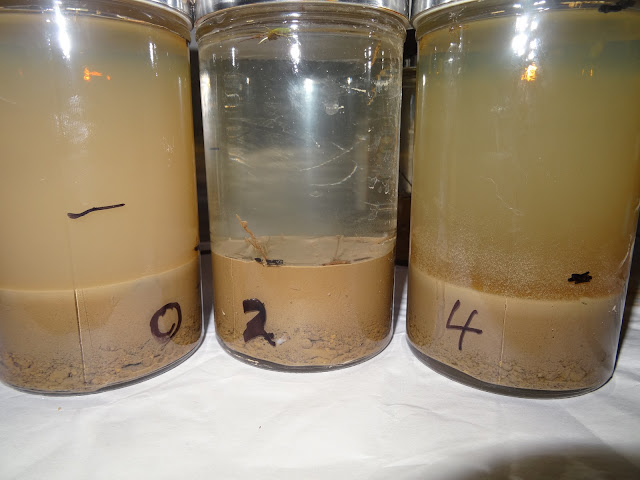SPLENDOR OF SUSTAINABLE AGRICULTURE: Comparing the Effects of Sodium Chloride-Based Salt with Urea-Based Salt on Soil Sedimentation
By Peter Emau
A farmer dedicated to sustainable agriculture continues to
seek an understanding of how nature works, especially, the effects of chemicals
on soil. This is because, from soil we get our food.
A variety of salt-based chemicals are often used on roads or drive-ways to de-icing in winter in many areas with snow. Some of the salt, however, may get washed into nearby agricultural land. Therefore, here is another experiment:
EF2019B Comparing the effects of magnesium/calcium-based salt with Urea-based
salt (pet safe) on soil sedimentation.
- Jar #0 has nothing added (negative control);
- Jar #1 has a quarter teaspoon of rock salt (Sodium Chloride);
- Jar #2 has half teaspoon of rock salt:
- Jars # 3 and 4 have a quarter and half teaspoon, respectively, of urea-based salt.
- All jars have soil and water added so that soil is 15% volume in 500 mL jar.
- Then mix vigorously to suspend the soil and dissolve the salts. Allow to stand. Read the clay, silt and sand layers after 2, 24, 48, 60, 72, 96, 120 and 144 hours.
The results are shown in the picture attached. That’s, while Sodium Chloride based salt neutralized the separation of clay and silt, urea-based salt does not. In addition, the clay and silt layers sediment faster- resulting in very clear transparent, supernatant within a short time.
Rock salt may
be affecting the electrical charges of the soil particles which in turn alters
their sedimentation rate - makes them sediment faster, nearly like the larger
particles of sand.





Comments
Post a Comment